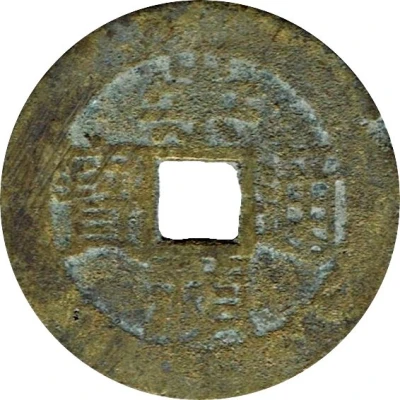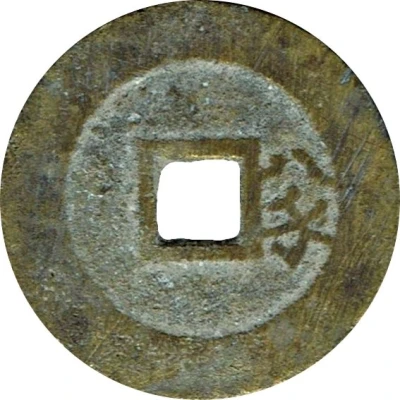1 Cash - Chongzhen Tongbao; southern type; Qing ND
| Brass | - | 23 mm |
| Issuer | Empire of China |
|---|---|
| Emperor | Ming dynasty › Chongzhen (崇祯帝) (1627-1644) |
| Type | Standard circulation coin |
| Years | 1630-1644 |
| Value | 1 Cash |
| Currency | Cash (621-1912) |
| Composition | Brass |
| Diameter | 23 mm |
| Shape | Round with a square hole |
| Technique | Cast |
| Orientation | Medal alignment ↑↑ |
| Demonetized | Yes |
| Updated | 2024-10-03 |
| Numista | N#222959 |
|---|---|
| Rarity index | 100% |
Reverse
One Chinese ideogram below.
Script: Chinese (traditional, regular script)
Lettering: 青
Translation:
Qing
[Uncertain mint]
Edge
Plain
Comment
Hartill suggests the larger, heavier coins (around 26 millimetres and weighing 1.3 Qian) were the first 1 Cash pieces produced. By 1630, coins minted in the north weighted 1.0 Qian and coins minted in the south weighed 8 Fen or less.The Northern types and the Southern types are differenciated by the left part of Zhen.
- Northern types: 礻
- Southern types: 示
Interesting fact
The Chongzhen Tongbao coin was the first coinage issued by the Qing dynasty, which ruled China from 1644 to 1912. The coin was introduced in 1630, during the reign of Emperor Chongzhen, and it replaced the previous Ming dynasty's coinage. The Chongzhen Tongbao coin was made of brass and had a standardized design, with the characters "通寶" (Tongbao) on one side and the Emperor's reign title "重鑄" (Chongzhen) on the other. This coin was an important innovation in Chinese currency, as it introduced a unified national currency that replaced the various local currencies that were in use before.

